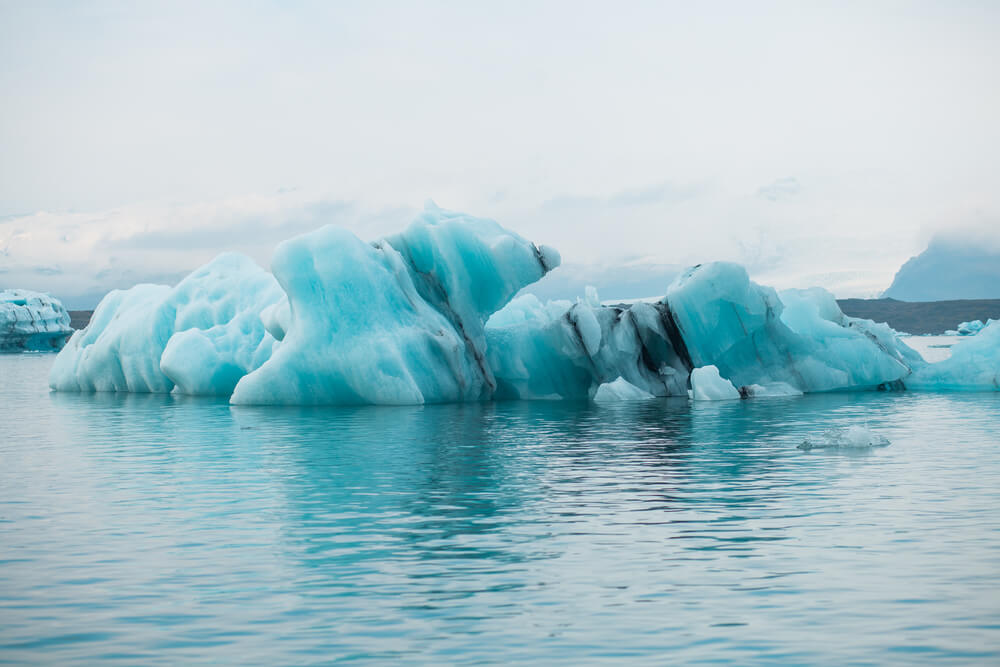How accurate were climate change predictions made 20 years ago
In 2000, experts made predictions about climate change on the planet, which, in their opinion, should have happened in 20 years. Were these predictions accurate? Deal offers USA Today.

Photo: Depositphotosclima
“Here's what forecasting models correctly told us 20 years ago: If we continued to add fossil fuels to the atmosphere at an increasing rate, we would see an increasingly wide range of impacts, including declining Arctic sea ice, rising sea levels and changes in precipitation patterns. "Weather Underground meteorologist Robert Henson said.
In general, we are approaching forecasts made in 2000 regarding carbon dioxide concentrations, global temperature and sea level, added Henson. Look at the predicted indicators of climate change for 2020:
Carbon dioxide
Carbon dioxide is the greenhouse gas that scientists say is most responsible for global warming. According to the National Oceanic and Atmospheric Administration, since the beginning of the 90s, the level of carbon dioxide in the Earth’s atmosphere has increased from 358 ppm to almost 412 ppm. This is 15% more in 27 years.
Sea level rise
Since 1992, global sea levels have been rising by an average of 2,9 millimeters per year. In total, it is 78,3 millimeters, according to NOAA.
Penn State Meteorologist Michael Mann argued that we underestimated the rate of collapse of the ice sheet, which has "implications for future sea level rise."
Both giant ice sheets in the world have lost enormous amounts of ice over the past two to three decades: according to a study published by the National Academy of Sciences, Greenland's ice sheet lost 5,2 trillion tons of ice from 1993 to 2018.
According to a study in the journal Nature, between 1992 and 2017, the Antarctic ice sheet lost 3 trillion tons of ice.
On the subject: Impossible to stop: irreversible climate change began on Earth
Weather disasters
Mann said that we "underestimated the sharp increase in extreme weather events, such as the unprecedented heat, droughts, forest fires and floods that we have witnessed in recent years."
Since 1993, there have been 212 natural disasters that cost the United States at least $ 1 billion each, adjusted for inflation.
In total, they cost $ 1,45 trillion and killed more than 10 people. This is an average of 000 such disasters per year since 7,8, compared with 1993 per year between 3,2 and 1980, according to NOAA.
“Just as climate models almost certainly underestimate the impact of climate change on such extreme weather events, projections from these models are also likely to underestimate future increases in such events,” Mann wrote last year.
“Overall, our models got it right, plus or minus,” said Zeke Hausfather, a scientist at the University of California, Berkeley.
Global growth
Henson noted that global climate models were on the right track 20 years ago: global temperatures will continue to rise as greenhouse gases continue to build up in the atmosphere. This was confirmed: according to NOAA, the average temperature on the planet has risen a little more than a degree Fahrenheit since the mid-90s.
According to Henson, these climate models were not designed to predict variability from decade to decade, so we did not fully anticipate a slowdown in global warming in the first decade of this century and much faster growth in the 2010s, which was associated with a growing rate of accumulation heat in the ocean.
According to the National Snow and Ice Data Center, the average annual sea ice extent in the Arctic has declined from 4,7 million square miles in 1992 to 3,9 million square miles in 2019. This is 17% less.
On the subject: The Impact of Climate Change: Which US Cities Will Be Under Water This Century
Droughts and wildfires
“Some aspects of regional climate change have also moved beyond the 2000 outlook,” Henson said. “For example, it is now clear that droughts in California are likely to be hot, setting the stage for longer and more destructive wildfire seasons.”
According to the National Interdepartmental Fire Center, the number of acres burned by forest fires in the United States more than doubled: from a five-year average of 3,3 million acres in the 1990s to 7,6 million acres in 2018.
"Flood of a Sunny Day"
“The threat posed by the Sunshine Flood is much greater than in 2000,” Henson said. “Tidal flooding is much more common in many parts of the Gulf of Mexico and Atlantic coasts than it was 20 years ago, and NOAA predicts that some places could experience more than 80 days of flooding per year as early as 2040.”
Read also on ForumDaily:
Business to save the planet: how to make money to fight global warming
Los Angeles and other US cities will turn into desert by 2080: list
Personal experience: what each of us can do to save the planet
Gamers in power and cities on the water: what megalopolises will become in 2100
Subscribe to ForumDaily on Google NewsDo you want more important and interesting news about life in the USA and immigration to America? — support us donate! Also subscribe to our page Facebook. Select the “Priority in display” option and read us first. Also, don't forget to subscribe to our РєР ° РЅР ° Р »РІ Telegram and Instagram- there is a lot of interesting things there. And join thousands of readers ForumDaily New York — there you will find a lot of interesting and positive information about life in the metropolis.











